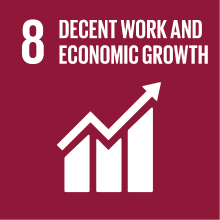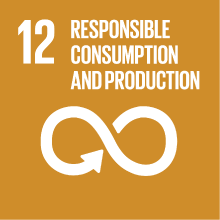HISTORY OF INNOVATION
- Academic year
- 2022/2023 Syllabus of previous years
- Official course title
- HISTORY OF INNOVATION
- Course code
- EM7030 (AF:386009 AR:214450)
- Modality
- On campus classes
- ECTS credits
- 6
- Degree level
- Master's Degree Programme (DM270)
- Educational sector code
- SECS-P/12
- Period
- 3rd Term
- Course year
- 1
- Where
- VENEZIA
- Moodle
- Go to Moodle page
Contribution of the course to the overall degree programme goals
Expected learning outcomes
2. Students distinguish, compare and appraise different kinds of innovation; they deconstruct the innovation process in its phases, they recognize its technical, social, institutional components and their interaction.
3. Students explain and summarize how technical innovation works making reference to the social construction of technology theories and discuss relevant examples.
4. Students identify the role of institutions in promoting or hindering innovation, adopt a systemic approach to the study of innovation, reflect on and discuss historical case studies.
5. Students recognize different strategies that brands and firms have used to innovate and how they varied through time.
6. Students formulate hypothesis about continuities and discontinuities between current and past innovation strategies.
Class and online discussion
7. Students comment and debate historical case studies: they make hypothesis, present their argument, justify their choice and defend their view.
Group presentation
8. Experior project: selected students (email must be sent by design an innovative marketing strategy for a cosmetic brand coping with challenges of both sustainability and omnichannel marketing.
Pre-requirements
Contents
Key questions: How to study innovation? Why to study the history of innovation? What does an historical approach tell us (that we can not observe in the present)?
1/15 Introduction: A few things I (need to) know about innovation
2/15 Experior Project - Presentation of the Project and Rules of the Game. Students interested need to send a mail with one sentence motivation by lesson 3 - more info in Moodle (first come, first served)
3/15 Why an Historical Approach? Innovation through Time
Week 2. Inside the Black Box (and beyond neoclassic economics). Main Theoretical Approach in Innovation Studies
Key questions: What is a Systematic Approach to Innovation? Which systems we refer to? How does a system of innovation work? What we mean by “Social Construction of Technology”? What is the resource based approach to the study of the innovative firm? When a firm is innovative? What is the “skill base”?
4/15 Systems of Innovation: How does Innovation Work?
5/15 The Social Construction of Technology: Towards a Theory of Sociotechnical Change.
6/15 When a Firm is Innovative? The Resources based approach
Week 3. Historical Cases on Firms and Innovation (Branding and Organization)
Key questions: How and why did firms innovate in history? And which resources did they use? How did they deal with consumers, institutions, technical change?
7/15 Innovation through Cultural Branding.
8/15 Innovation through organizational change and advertising
Week 4. Firms face Innovation. Historical Cases on Innovation (technical innovation)
9/15 Marketing Innovation in Cosmetic industry
10/15 Pharmaceutical firms and the transition to biotechnology:
11/15 Innovation as adaptation
Week 5. Towards a theory for sustainable innovation: the new is the old!
12/15 Sustainable Innovation in traditional industries
13/15 Innovation and sustainable transition: historical cases and problems of today
14/15 Presentation of Experior project
15/15 Wrap up and exam preparation
Referral texts
NON ATTENDING AND STUDENTS WHO DO NOT PARTICIPATE TO THE CLASS ACTIVITIES
1. J. Fagerberg, Innovation – a New Guide. TIK WORKING PAPERS on Innovation Studies. No. 20131119
2. C. Bruland, D. Mowery, Innovation through time, in Oxford Handbook of Innovation, eds. J. Fagerberg, David C. Mowery, and Richard R. Nelson, OUP, 2004, pp 349- 379
3. W. Bijker, The King of the Road, the Social Construction of the Safety Bike, in Bijker, Wiebe Of Bicycles, Bakelites, and Bulbs. Toward a Theory of Sociotechnical Change, 1985, MIT Press, pp. 19-100
4. B. Lazonick, The Innovative Firm, in Oxford Handbook of Innovation, eds. J. Fagerberg, David C. Mowery, and Richard R. Nelson, OUP, 2004, pp 29-56.
5. J. Fagerberg, Mobilizing innovation for sustainability transitions: A comment on transformative innovation policy, Research Policy, Volume 47, Issue 9, 2018, pp 1568-1576
One among:
1. D. Tsang, (2021) Innovation in the British video game industry since 1978. Business History Review, 95 (3). pp. 543-567.
2. U. Spiekermann. “Twentieth-Century Product Innovations in the German Food Industry.” The Business History Review 83, no. 2 (2009): 291–315.
One among:
1. P. Aversa, Schreiter, Katrin, Guerrini, Filippo, The Birth of a Business Icon through Cultural Branding: Ferrari and the Prancing Horse, 1923–1947 Enterprise & Society
2. R. Marchand, “The Corporation Nobody Knew: Bruce Barton, Alfred Sloan, and the Founding of the General Motors ‘Family.’” The Business History Review 65, no. 4 (1991): 825–75.
One among:
1. P. Miskell (2004). Cavity Protection or Cosmetic Perfection? Innovation and Marketing of Toothpaste Brands in the United States and Western Europe, 1955–1985. Business History Review, 78(1), 29-60.
2. L. Galambos; J. Sturchio, Pharmaceutical firms and the transition to biotechnology: A study in strategic innovation, Business History Review; Summer 1998; 72, 2.
3. K. Sogner, Innovation as Adaptation: The Digital Challenge in the Norwegian Fishing Industry, 1970-1985, Business History Review, 2009, vol. 83(2), pages 349-367.
One among:
1. A. Mamidipudi & Bijker, W. E. (2018). Innovation in Indian Handloom Weaving. Technology and Culture, 59(3), 509-545
2. M. Eisler, Public Policy, Industrial Innovation, and the Zero-Emission Vehicle. Business History Review, 2020, 94(4), 779-802.
Assessment methods
2. In class and at home: group activity (4 students max), students need to discuss the reading of the day in both oral and written form. They have to prepare a presentation (max 10 slides), where they identify a) main disciplinary frame b) research hypothesis c) methodology d) results; they have to list at least 3 questions for each student of the group showing connections between the case under analysis and the ones we have previously analyzed\ or the theoretical approaches; write everything down in the form of a short essay including a learning reflection and self-assessment. Feedback on Monday of the following week (grid with evaluation criteria\ expected competences). Grade: 1, 2 or 3 extra points. Compulsory for attending students.
3. Final exam: oral exam\ final grade
Type of exam
Teaching methods
Teaching language
Further information
2030 Agenda for Sustainable Development Goals
This subject deals with topics related to the macro-area "Circular economy, innovation, work" and contributes to the achievement of one or more goals of U. N. Agenda for Sustainable Development


